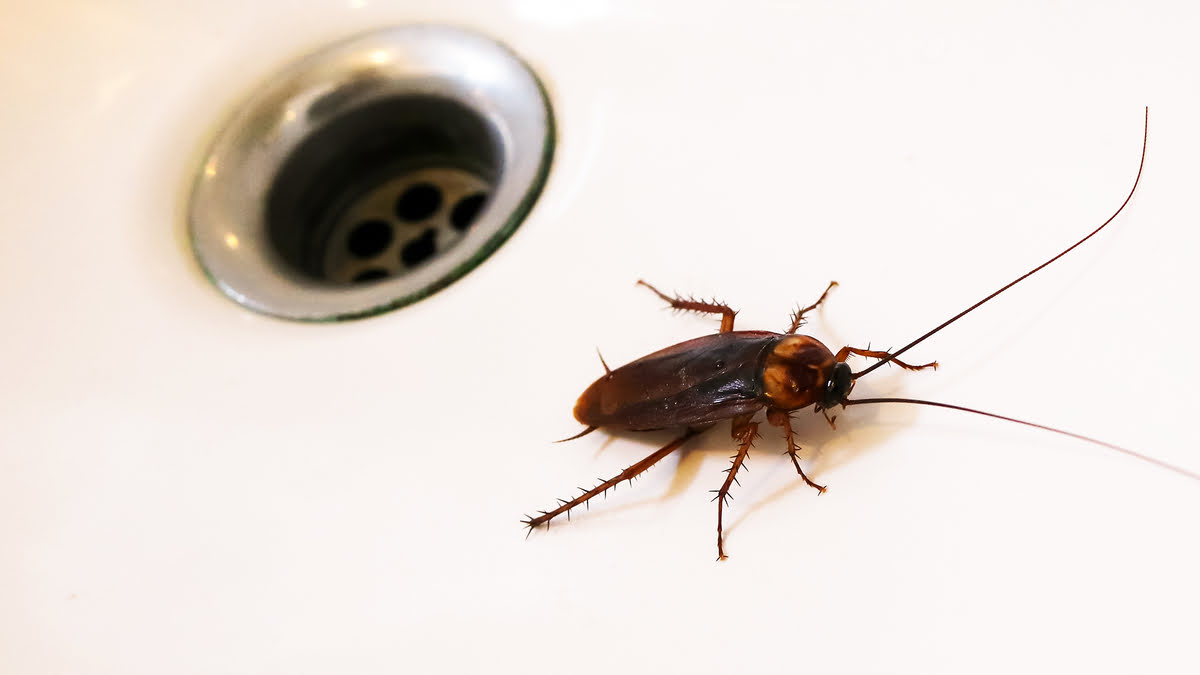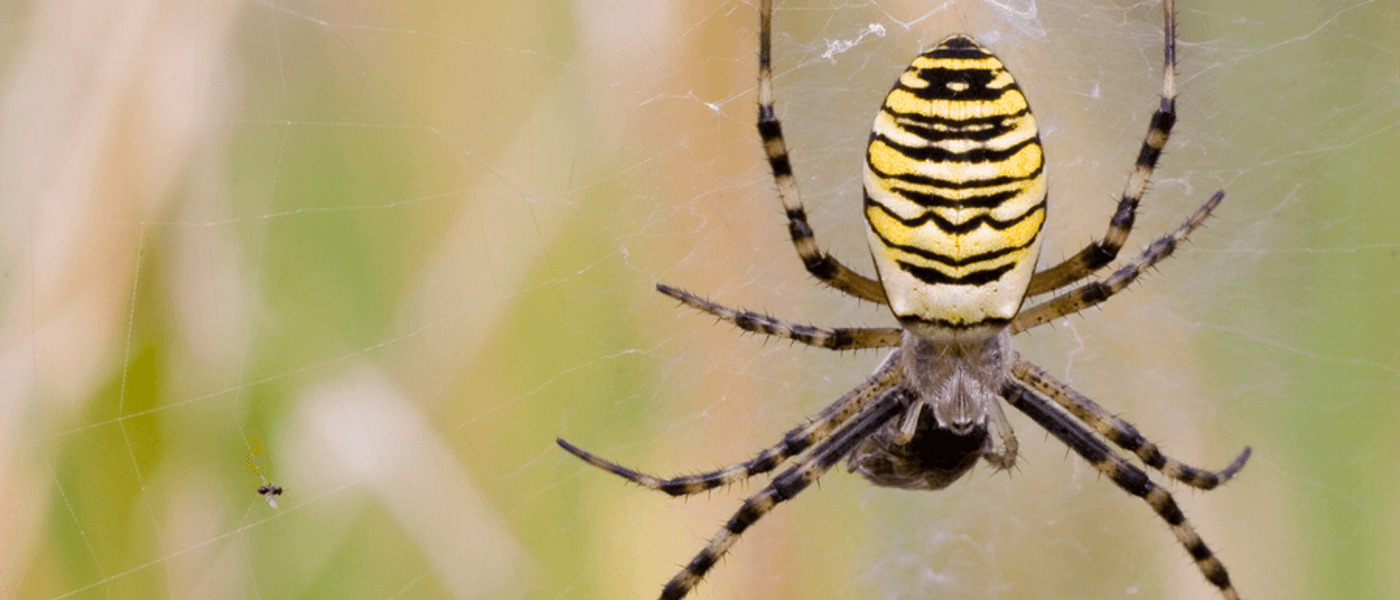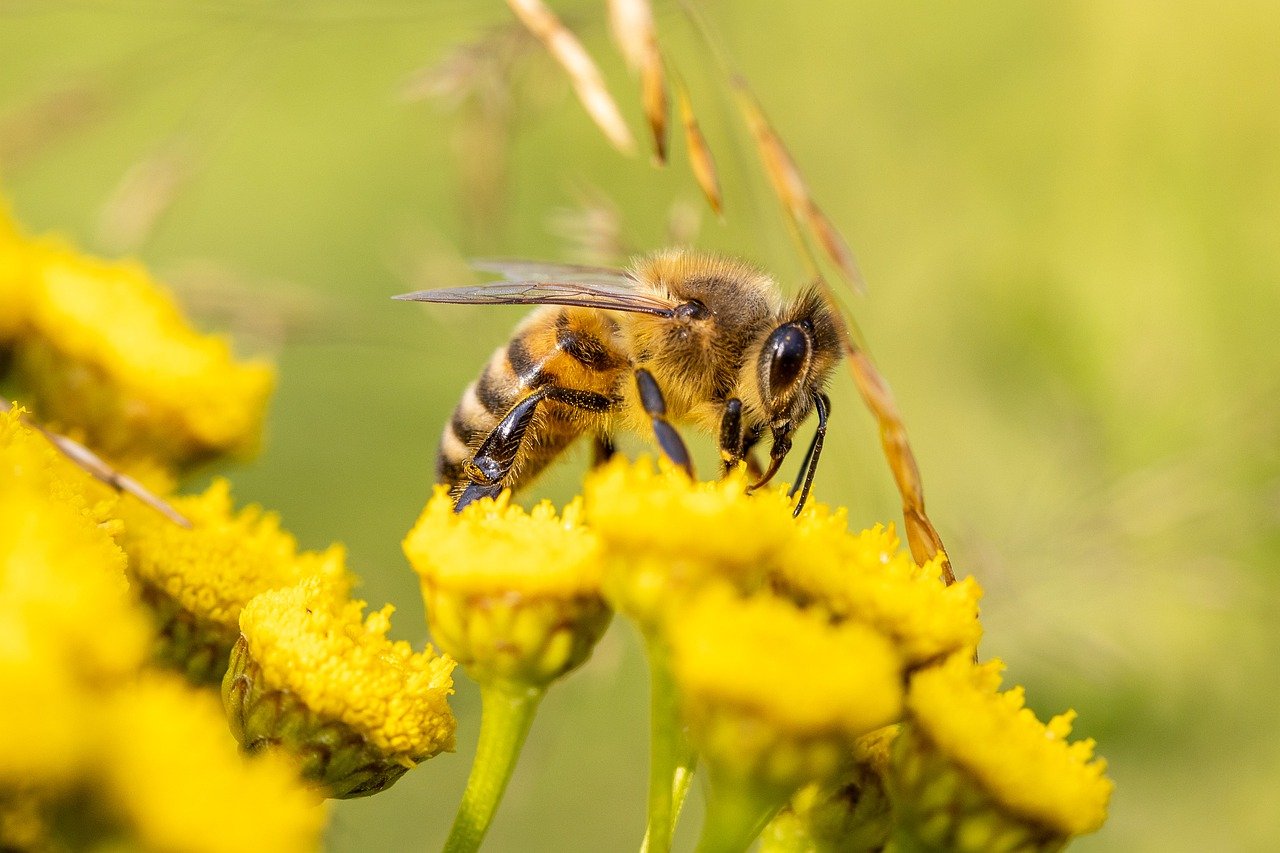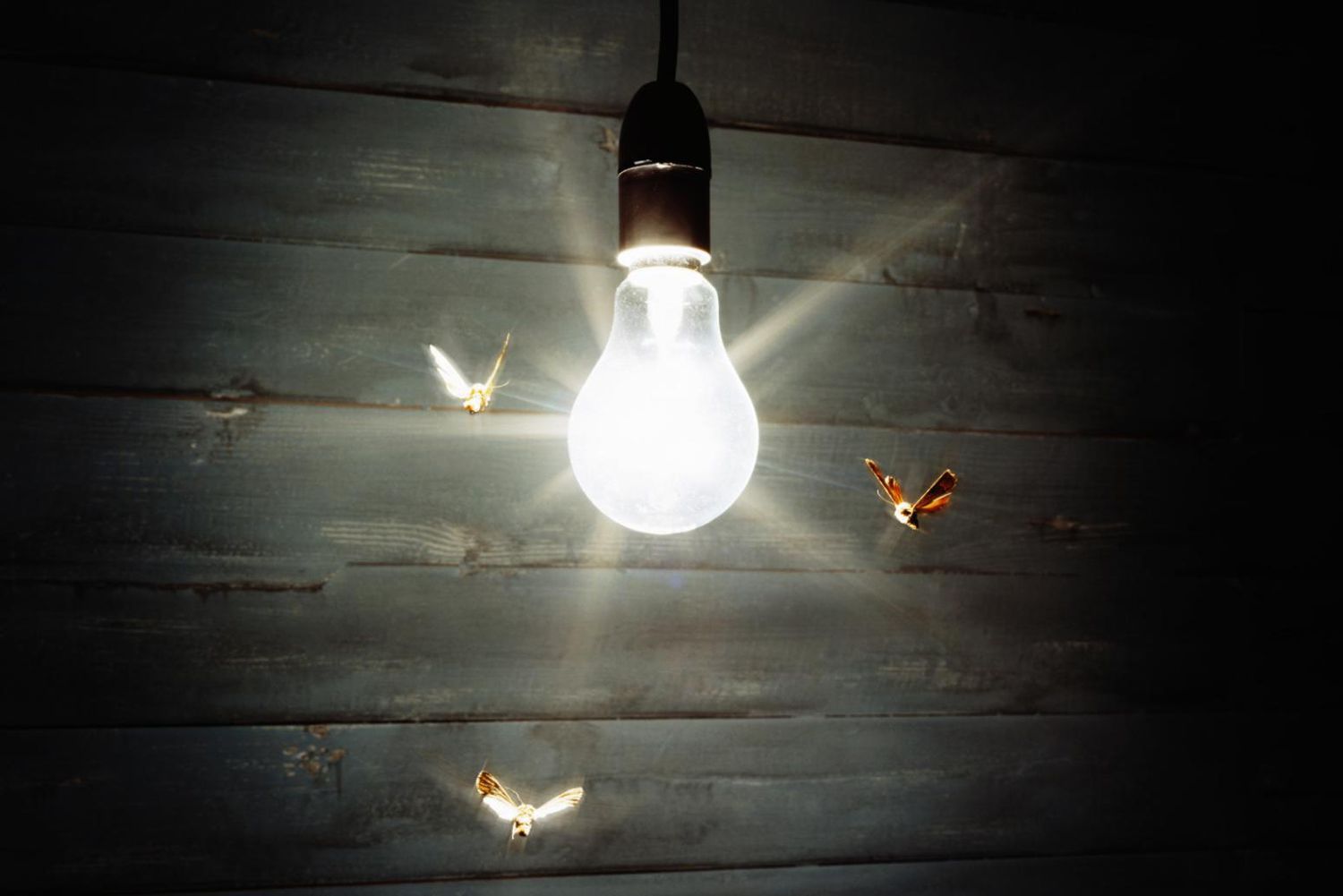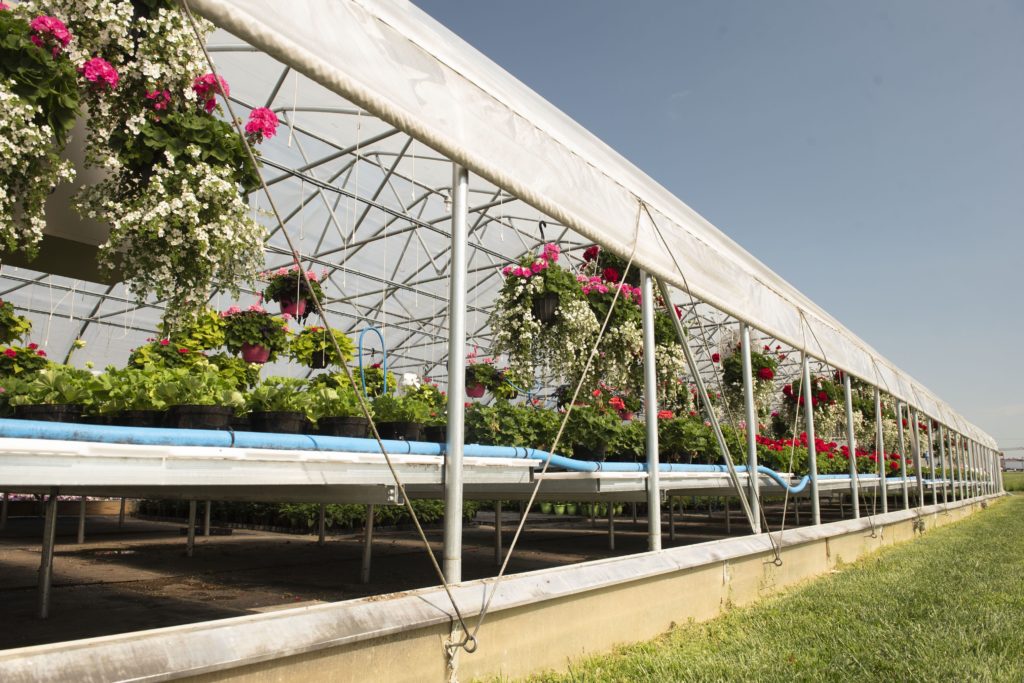Home>Gardening News and Trends>Latest News>Why Are Insects So Big In Australia


Latest News
Why Are Insects So Big In Australia
Modified: January 22, 2024
Discover the fascinating reason behind why insects are so big in Australia in our latest news article. Explore the unique ecosystem and evolutionary factors that contribute to the impressive size of these creatures.
(Many of the links in this article redirect to a specific reviewed product. Your purchase of these products through affiliate links helps to generate commission for Chicagolandgardening.com, at no extra cost. Learn more)
Table of Contents
Introduction
Australia is renowned for its unique and diverse wildlife, from kangaroos and koalas to venomous snakes and giant spiders. However, one aspect of Australia’s fauna that often captivates both locals and visitors alike is the astonishing size of its insect species. From massive moths to colossal cockroaches, the land Down Under seems to be home to a multitude of larger-than-life creepy crawlies.
But why are insects so big in Australia? This question has puzzled entomologists and nature enthusiasts for decades. In this article, we will explore the fascinating world of Australian insects and unravel the mysteries behind their impressive size.
Australia’s geographic isolation has allowed its insect species to evolve in unique ways. Being separated from other landmasses for millions of years, Australia has developed its own distinct ecosystem, giving rise to a remarkable array of flora and fauna found nowhere else on Earth. This isolation has played a crucial role in shaping the size and characteristics of Australian insects.
Additionally, Australia’s warm and favorable climate provides ideal conditions for insect growth. With its long summers, abundant rainfall, and vast expanses of lush vegetation, the country offers a bountiful source of food and shelter for insects to thrive. The availability of resources allows insects to reach their full genetic potential, resulting in larger body sizes compared to their counterparts in other parts of the world.
Furthermore, the lack of major predators in Australia has contributed to the gigantism of its insects. Unlike many other regions where insects face constant predation and must adapt to small sizes for survival, Australian insects have had the luxury of expanding in size without significant threats from natural enemies. This absence of predation has allowed for the evolution of larger body sizes as a successful survival strategy.
Another factor behind the size of Australian insects lies in the country’s ancient evolutionary history. Australia has a rich fossil record, dating back millions of years. Fossil evidence suggests that the continent was once home to massive creatures, including giant megafauna. It is believed that these ancient giants left an imprint on the genetic makeup of modern Australian insects, leading to their substantial size.
Overall, the size of insects in Australia is a result of various ecological, evolutionary, and environmental factors. The combination of geographic isolation, favorable climate, limited predation pressure, and the influence of ancient megafauna has culminated in the impressive array of large insects that inhabit the country.
Unique Characteristics of Australian Insects
Australian insects exhibit a range of distinctive characteristics that set them apart from their counterparts in other parts of the world. These unique features contribute to the fascination and intrigue surrounding the insect life in Australia.
One remarkable characteristic of Australian insects is their size. Many species found in the country are significantly larger than their relatives in other regions. Giant insects such as the Hercules moth, which has a wingspan of up to 27 centimeters, and the Goliath beetle, measuring up to 11 centimeters in length, showcase the extraordinary size diversity in the Australian insect world. The larger body sizes offer advantages such as enhanced reproductive success, increased survival rates, and improved resistance to adverse environmental conditions.
Another distinguishing feature of Australian insects is their vibrant and vibrant coloration. Many species display striking hues of red, orange, yellow, blue, and green, which serve various purposes. Bright colors can act as warning signals to potential predators, indicating that the insect possesses toxins or is unpalatable, while others use their vibrant colors for camouflage or mating displays. The dazzling colors of Australian insects add to the visual spectacle of the country’s insect fauna.
Furthermore, Australian insects showcase an incredible level of diversity. The continent is home to an estimated 250,000 insect species, with new species being discovered regularly. The vast range of habitats in Australia, from lush rainforests to arid deserts, supports a wide array of insect life. This diversity spans across numerous taxonomic groups, including beetles, butterflies, bees, ants, grasshoppers, and many more.
A notable group of insects in Australia is the stick insects, also known as phasmids. Australia boasts a remarkable variety of stick insect species, ranging from tiny twig-like individuals to massive, robust forms. These insects have evolved incredible camouflage abilities, blending seamlessly with their surroundings to evade predation. The diversity and adaptability of stick insects in Australia are unparalleled.
Australian insects also demonstrate unique behavioral adaptations. The dancing behavior of male peacock spiders, mesmerizing in its precision and flamboyance, has gained worldwide attention. Male peacock spiders perform elaborate courtship dances, showcasing vibrant colors and intricate movements to attract females. These captivating displays highlight the complex mating behaviors exhibited by Australian insects.
Overall, the unique characteristics of Australian insects, including their impressive size, vibrant coloration, incredible diversity, and fascinating behaviors, contribute to the allure and wonder of the insect world in Australia.
Factors Contributing to the Size of Australian Insects
Several factors have played a role in shaping the impressive size of insects in Australia. These factors have influenced the evolutionary trajectory of Australian insect species, leading to their larger-than-average body sizes.
One of the key contributing factors is the abundance of food resources in Australia. The country’s varied and fertile landscapes provide a plentiful supply of vegetation, including rich plant species diversity. The abundance of food sources allows insects to access a nutrient-rich diet, which is vital for their growth and development. In turn, this ample supply of food enables Australian insects to achieve larger sizes compared to their counterparts in regions with less resource availability.
In addition to food availability, Australia”s warm and favorable climate is another essential factor in the size of its insects. The long summers and mild winters provide an extended period for insect growth and reproduction. This extended development time allows insects to dedicate more resources to their growth, resulting in larger body sizes. The combination of favorable temperature conditions and an extended growing season contributes to the gigantism observed in Australian insect species.
The absence of major insect predators in Australia has also influenced the size of its insect population. In many regions, insects face constant predation pressure, which often limits their size and forces them to adopt adaptive strategies such as camouflage or small body sizes for survival. However, in Australia, the lack of significant predators has removed this pressure, allowing insects to evolve and thrive at larger sizes. Without the need to invest resources in defensive mechanisms or prioritizing small body sizes for survival, Australian insects have the freedom to grow to their maximum genetic potential.
Furthermore, evolutionary history and genetic inheritance contribute to the size of Australian insects. Australia has a long history of isolation, with its unique fauna evolving in relative isolation from the rest of the world for millions of years. This isolation has led to distinct genetic lineages and a unique combination of genes specific to Australian insect species. It is believed that remnants of the genetic legacy of ancient megafauna, such as oversized insects, still persist in the genetic makeup of modern Australian insects, contributing to their larger size potential.
Overall, the combination of abundant food resources, a favorable climate, the absence of major predators, and genetic factors linked to evolutionary history has resulted in the impressive size of insects in Australia. These factors have provided the ideal conditions for Australian insects to reach their full size potential and thrive in the country’s diverse and unique ecosystems.
Adaptations of Australian Insects
Australian insects have evolved remarkable adaptations that have allowed them to thrive in diverse and often challenging environments. These adaptations enable them to exploit available resources, avoid predators, and successfully reproduce in their unique habitats.
One of the significant adaptations of Australian insects is their ability to withstand harsh and arid conditions. In many parts of Australia, particularly the central and western regions, the climate can be extremely dry, with limited access to water sources. In response, some insects have developed adaptations that allow them to minimize water loss. They have evolved specialized cuticles, small body sizes, and efficient respiratory systems to conserve water and survive in arid environments. These adaptations ensure their survival during times of drought and scarcity of water.
Australian insects also demonstrate remarkable camouflage mechanisms. Many species have evolved coloration and body structures that effectively blend with their surroundings. This adaptation allows them to avoid detection by predators and increases their chances of survival. Examples of camouflage adaptations in Australian insects include stick insects that resemble twigs or leaf litter, grasshoppers with patterns that mimic foliage, and moths with patterns resembling tree bark or leaves. These adaptations give them a significant advantage in evading predators and securing their survival.
Additionally, some Australian insects have developed unique defense mechanisms to protect themselves from predators. Many species possess potent toxins or chemical defenses that make them unpalatable or even deadly to would-be attackers. For instance, the venomous bites of Australian spiders and scorpions are notorious for their potency. Beetles in the genus Chrysina have bright metallic colors, serving as warning signals for their toxic nature. These adaptations deter predators and ensure the survival of these insect species in the face of potential threats.
Another remarkable adaptation of Australian insects is their ability to tolerate and utilize fire-prone environments. In many regions of Australia, bushfires are a regular occurrence. Some insect species have evolved a resilient life cycle, where their eggs can survive the intense heat of fires, and their development is timed to emerge and feed on the fresh growth that follows the fire. These insects play a crucial role in the post-fire ecosystem, aiding in the decomposition of charred vegetation and kickstarting the recovery process.
Furthermore, Australian insects have unique mating and courtship behaviors. These behaviors often involve elaborate displays, elaborate songs, or intricate dance movements. For instance, the courting behavior of male cicadas, known as “singing insects,” involves producing loud, buzzing calls to attract females. The spectacular courtship dances of male peacock spiders, with their intricate leg movements and vibrant displays, are another example of the fascinating mating adaptations exhibited by Australian insects.
In summary, Australian insects have evolved a range of impressive adaptations that assist them in surviving and thriving in their unique habitats. From water conservation mechanisms to camouflage, chemical defenses, fire tolerance, and elaborate mating behaviors, these adaptations allow Australian insects to overcome challenges, exploit available resources, and ensure their continued existence in the diverse ecosystems of the country.
Biodiversity and Ecology of Australian Insects
Australia is known for its exceptional biodiversity, and a significant part of this biodiversity can be attributed to its insect population. The country boasts a vast array of insect species that play vital roles in its diverse ecosystems.
With an estimated 250,000 insect species, Australia holds a staggering amount of insect diversity. This diversity is due to various factors, including the country’s large land area, wide range of habitats, and geographic isolation. From tropical rainforests in the north to arid deserts in the center and temperate woodlands in the south, Australia encompasses a diverse range of ecosystems that support a rich variety of insect life.
Australian insects fulfill essential ecological roles. They are key pollinators, ensuring the reproduction of flowering plants across the country. Many native plants in Australia rely on specific insect species for effective pollination, forming intricate mutualistic relationships. Species such as bees, butterflies, and beetles actively contribute to the pollination of both native flora and economically significant crops.
In addition to pollination, Australian insects also serve as decomposers, breaking down organic matter and aiding in nutrient cycling. Dung beetles, for example, play a critical role in recycling animal waste, helping to maintain the health of ecosystems by reducing organic waste and improving soil quality. In this way, insects contribute to the overall functioning and balance of Australian ecosystems.
A notable ecological interaction involving Australian insects is their relationship with plants that produce toxic compounds. Some insect species have evolved the ability to feed on and even sequester toxic chemicals from plants. This adaptation allows these insects to become unpalatable to predators, effectively utilizing the plant’s chemical defense to their advantage. The iconic monarch butterfly is an example of an insect that sequesters toxins from milkweed plants, making them unappealing to predators.
Furthermore, Australian insects play a crucial role in the food chain. Insectivorous birds, reptiles, and mammals heavily rely on insects as their primary food source. The abundance and diversity of insects in Australia support the survival and diversity of these higher-level predators, contributing to the overall ecological balance in the country.
Unfortunately, the biodiversity and ecology of Australian insects are facing challenges. Habitat destruction, climate change, pesticide use, and invasive species pose significant threats to insect populations. These threats have the potential to disrupt ecological interactions, reduce biodiversity, and impact the overall health and functioning of ecosystems.
Efforts are being made to conserve and protect Australian insect biodiversity. Researchers study insect populations and their interactions with their environments to better understand their importance and inform conservation strategies. Public awareness campaigns promote the value of insects and highlight the need for their preservation. Additionally, habitat conservation initiatives and sustainable land management practices aim to protect the diverse habitats that support insect life.
The continued exploration and understanding of the biodiversity and ecology of Australian insects are crucial for the conservation and sustainable management of Australia’s unique and fragile ecosystems.
Human-Insect Interactions in Australia
Australia is a country where human-insect interactions can be both fascinating and challenging. From economic considerations to public health concerns, the relationship between humans and insects in Australia is complex and multifaceted.
One significant aspect of human-insect interactions in Australia is agriculture. Insects can have a major impact on agricultural productivity as they can damage crops, reduce yields, and even render them unmarketable. Farmers and agricultural scientists continually strive to develop effective pest management strategies to protect crops from insect pests. This may involve the use of insecticides, biological control methods, or the implementation of integrated pest management techniques to minimize the impact of pests on agricultural production. Balancing the need for pest control with environmental sustainability and the preservation of beneficial insects is a constant challenge in Australian agriculture.
In addition to their impact on agriculture, some Australian insects have become notorious for their bites and stings, posing risks to human health. Venomous spiders, such as the redback spider and the funnel-web spider, are widely feared due to their potentially dangerous bites. Venomous ants, such as the bull ant and the green-head ant, also present threats to humans and can cause painful bites. In response, public education campaigns and appropriate pest control measures are employed to reduce the risks associated with these insects and to promote awareness of effective first aid measures.
On the other hand, some Australian insects have positive ecological contributions and cultural significance. For example, the honeybee (Apis mellifera), introduced to Australia, plays a critical role in pollination and honey production. Beekeepers work diligently to maintain healthy honeybee colonies and support essential pollination services for both agricultural crops and native flora. In Indigenous Australian cultures, insects such as witchetty grubs and honey ants have traditional and cultural significance, often used as food sources or in ceremonial practices.
Tourism and recreation can also be influenced by Australian insects. Visitors from around the world are often fascinated by the unique wildlife, including the impressive diversity of insects. Ecotourism activities such as insect watching, butterfly farms, and insect-focused guided tours contribute to local economies and raise awareness about the importance of insect conservation. However, the sensitive balance between promoting tourism and preserving fragile ecosystems must be carefully managed to avoid undue disruption to insect populations and their habitats.
Lastly, citizen science initiatives involving insects have gained popularity, allowing the public to contribute valuable data and observations about insect populations. These efforts help scientists monitor insect distributions, track population trends, and study the impacts of environmental change on insect communities. Citizen involvement offers an opportunity for increased public engagement in environmental stewardship and a deeper understanding of the role insects play in ecosystems.
In summary, human-insect interactions in Australia encompass a range of considerations, from agricultural productivity and pest management to public health concerns and cultural significance. Balancing the needs of human activities with the preservation of insect biodiversity and ecological processes is essential for maintaining a healthy and sustainable coexistence between humans and insects in Australia.
Conclusion
The size, unique characteristics, and diverse adaptations of insects in Australia have captivated the attention of researchers, enthusiasts, and visitors alike. The country’s geographic isolation, favorable climate, lack of major predators, and ancient evolutionary history have combined to create favorable conditions for the development of large and diverse insect species.
Australian insects exhibit remarkable adaptations that allow them to thrive in a wide range of environments, from arid deserts to lush rainforests. Water conservation mechanisms, camouflage, chemical defenses, fire tolerance, and intricate mating behaviors are just a few examples of the fascinating adaptations observed in these insects.
The biodiversity and ecology of Australian insects are crucial components of the country’s ecosystems. Insects play integral roles as pollinators, decomposers, and contributors to the food chain. They ensure the reproduction of plants, aid in nutrient cycling, and provide a vital food source for insectivorous animals. However, the biodiversity and ecological balance of Australian insects face threats from habitat destruction, climate change, pesticide use, and invasive species.
Human-insect interactions in Australia are diverse and complex. Insects play a significant role in agriculture, either as beneficial pollinators or as damaging pests. Venomous insects pose risks to human health, while others have cultural and ecological importance. Tourism, recreation, and citizen science initiatives also contribute to the interactions between humans and insects in the country.
Preserving the unique insects of Australia is of paramount importance. Efforts to conserve and protect their biodiversity, raise public awareness about their importance, and implement sustainable management practices are vital to ensure their continued existence and ecological contributions.
In conclusion, the size, adaptations, biodiversity, and human-insect interactions in Australia highlight the extraordinary nature of its insect population. Understanding and appreciating these fascinating creatures is essential for the conservation and sustainable management of Australia’s diverse ecosystems and the intricate web of life in which insects play a crucial role.

